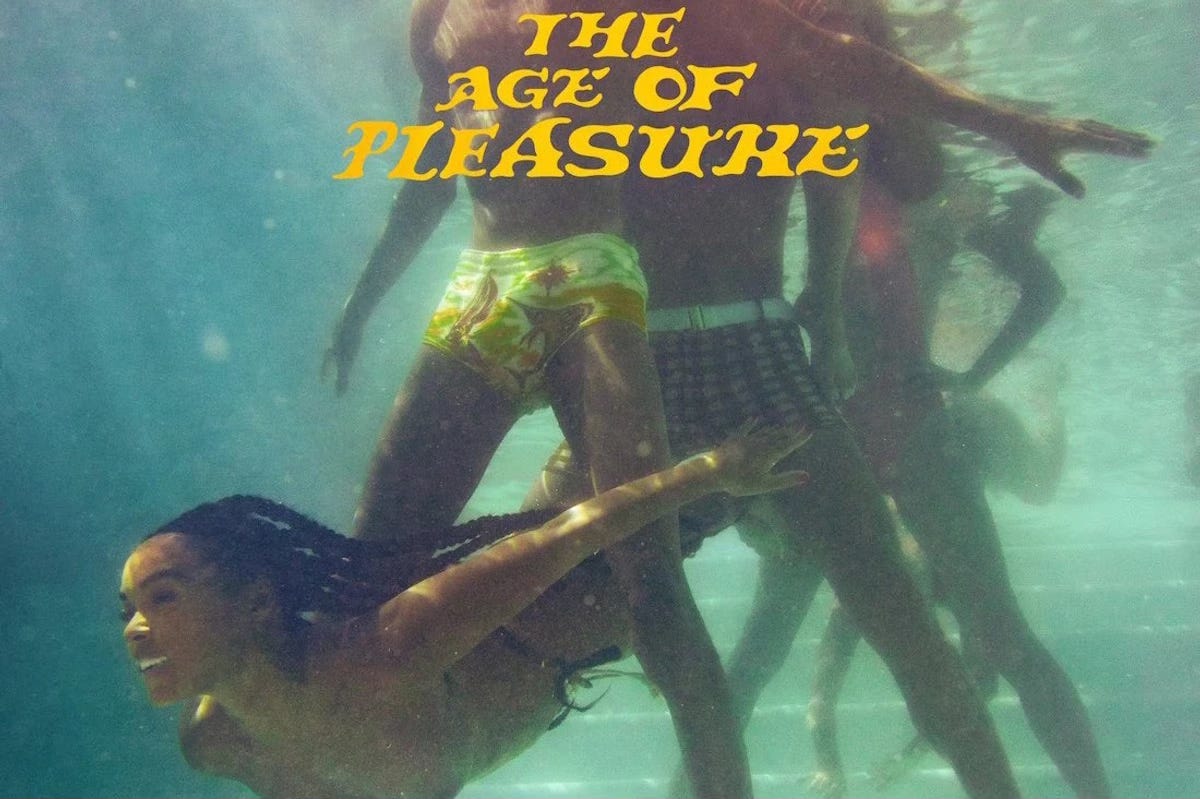The other day, I was shuffling through my music library on Apple Music, not looking for anything in particular—just something to match my mood. That’s when Janelle Monáe’s The Age of Pleasure started playing. Within seconds, I was pulled in—not just by the warmth of the sound or the sultry rhythms, but by an unexpected thought: This album feels like nudism.
Not nudism in the literal sense, but in spirit—fluid, unbothered, intimate, and deeply free. As someone who embraces nudism, I couldn’t help but see the parallels. This wasn’t just an album about fun or love. It was about being fully embodied, shedding the layers (physically and emotionally), and choosing joy as a radical act.
Through my lens, The Age of Pleasure becomes more than music—it becomes a soundtrack to liberation, an invitation to euphoria, and a celebration of being bare and unashamed. In a world where we are constantly clothed—physically, emotionally, and socially—Monáe gives us permission to exhale, to undress, and to remember what it feels like to simply be.
The Joy of Shedding
In many Western cultures, nudity is still tightly bound to shame or sex. From childhood, we are taught to cover up, to be modest, to conceal. Our bodies become sites of tension—something to hide, something to fix, something to control. But nudism—and Monáe’s expression of joy through The Age of Pleasure—offers a counter-narrative.
Throughout the album’s visuals, we see Monáe topless on boats, dancing freely in water, laughing among friends, and basking in sunlight. These images aren’t shocking—they’re soothing. They’re familiar in the way nature is familiar. There’s nothing scandalous about skin in these moments—it’s sacred. It’s whole.
To me, this is the essence of nudism: not just the act of being naked, but the intention behind it. It’s about letting go of shame and expectation. About remembering that the body, in its natural state, is not a problem to be solved. Monáe doesn’t pose her body as perfection. She presents it as joy.
Pleasure as Resistance
When we talk about nudism, we often forget that it’s not only about physical nudity—it’s also about emotional exposure. In a society obsessed with productivity, control, and appearances, the pursuit of pleasure—real, embodied pleasure—becomes a radical act.
For a Black artist like Monáe to center pleasure in her work is already a form of resistance. For her to do so while visibly, intentionally, and publicly embracing her body is even more powerful. It disrupts centuries of control and commodification, and replaces them with self-celebration.
Nudism, in this context, becomes an act of defiance. A refusal to perform. A declaration that joy and pleasure are not luxuries reserved for a few, but birthrights we all deserve access to.
In The Age of Pleasure, Monáe doesn’t just sing about love or sensuality. She embodies it. She becomes it. And in doing so, she shows us what it might look like to live without the constraints that society so tightly wraps around our bodies.
A Nudist Sonic Landscape
Listening to The Age of Pleasure feels like a warm breeze on bare skin. The album flows from track to track like water, with no jarring transitions or interruptions. The beats are rhythmic and fluid, rooted in Afrobeat, reggae, and soul—genres that have always carried stories of liberation, community, and rhythm.
The lyrics are intimate. The sound is communal. It feels less like a solo listening experience and more like a sunlit gathering with your closest friends—perhaps somewhere near the ocean, where clothes are optional and laughter is abundant.
In this way, the album captures the essence of what many nudists describe: a return to simplicity. A slowing down. A softening. It’s not performative. It’s personal. And it invites listeners to feel—not just the music, but themselves.
Reimagining Nudism Through Monáe’s Lens
While Janelle Monáe may not identify as a nudist, the energy she embodies during The Age of Pleasure era resonates deeply with modern nudist values. It encourages vulnerability, presence, and authenticity—values at the heart of body liberation.
Her visibility also broadens the lens through which nudism is seen. Too often, nudism is portrayed through a narrow, Eurocentric, male-dominated perspective. Monáe’s presence—bold, Black, feminine, and fully self-possessed—challenges that image. She reminds us that the right to be naked, joyful, and free isn’t reserved for one kind of body. It belongs to us all.
Her visuals don’t beg for validation. They simply exist. They hold space for bodies in motion, for bodies at rest, for bodies as they are. In a world that constantly tells us to change, cover, or edit ourselves, that kind of visibility is healing.
Final Thought: A New Kind of Naked
Janelle Monáe’s The Age of Pleasure doesn’t ask for permission. It doesn’t ask to be understood. It simply is—a naked, warm, fearless celebration of life and love.
And that, in essence, is what nudism truly is: not just a lifestyle, but a return to self. A love letter to the body. A decision to live unfiltered and unafraid. A way of saying, I am enough, exactly as I am.
Whether you’re dancing in your living room, shedding emotional layers, or literally standing bare under the sun—may you find your own version of pleasure. May you find your own age of freedom. And may you, too, feel what it means to be stripped down and set free.


